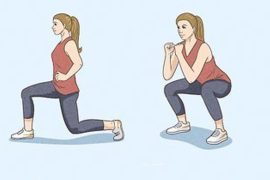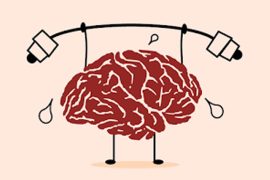Strength and endurance training, encompassing movements like jumping, hopping, and lifting, plays a crucial role in overall physical fitness and athletic performance. While many people may overlook the importance of assessing their strengths and weaknesses, undergoing such evaluations can provide valuable insights. For instance, a recent assessment by @suuperstrong highlighted to me the significance of tendon usage over muscle engagement during running, shedding light on years of injuries and suboptimal running form. This newfound awareness underscores the need to prioritize targeted strength training to support my tendons and muscles adequately, ultimately improving athletic performance, preventing injuries, and enhancing overall health and fitness.
Strength and endurance training are essential not only for athletes but also for the general population seeking to improve overall fitness and health. Activities like lifting weights, jumping, hopping, and sprinting play critical roles in building muscle strength, power, and endurance. These exercises not only help in developing stronger muscles but also contribute to better bone density, joint stability, and overall cardiovascular fitness. Incorporating such movements into a regular exercise routine can enhance physical performance, increase metabolism, and promote overall well-being.
1. Strength and Muscle Development:
- Lifting: Weightlifting exercises such as squats, deadlifts, and bench presses are fundamental for building strength and muscle mass. These exercises involve lifting weights against resistance, which stimulates muscle hypertrophy through the progressive overload principle. By gradually increasing the resistance over time, weightlifting helps muscles adapt and grow stronger.
2. Power and Explosiveness:
- Jumping and Hopping: Plyometric exercises like jumping and hopping are essential for developing power and explosiveness. These movements involve rapid and forceful contractions of muscles, particularly targeting fast-twitch muscle fibers. The stretch-shortening cycle in plyometrics improves the muscles’ ability to generate maximal force in minimal time, crucial for activities requiring explosive movements such as sprinting and jumping events.
3. Muscular Endurance:
- Repeated Bouts of Jumping and Hopping: Performing repeated bouts of jumping and hopping trains muscles to sustain high-intensity efforts over time, improving muscular endurance. This endurance is beneficial for sports and activities that require prolonged periods of exertion, such as long-distance running or endurance cycling.
4. Neuromuscular Coordination:
- All Exercises: Engaging in jumping, hopping, and lifting exercises enhances neuromuscular coordination. These movements require precise timing and coordination between muscles and nerves to execute movements efficiently. Improved neuromuscular coordination not only enhances performance in specific exercises but also in everyday activities requiring balance, agility, and motor control.
5. Aerobic and Anaerobic Conditioning:
- Sprinting and Interval Training: Sprinting involves short bursts of high-intensity activity, primarily enhancing anaerobic capacity—the ability to perform intense exercise without relying on oxygen. Interval training during sprinting sessions can also provide aerobic benefits, improving cardiovascular fitness and overall endurance. This dual conditioning is essential for athletes participating in sports requiring both short bursts of intense effort and sustained endurance.
6. Overall Physical Fitness:
- Integration of Exercises: Integrating jumping, hopping, and lifting exercises into a well-rounded fitness program promotes overall physical fitness. These exercises target different aspects of fitness—strength, power, endurance, and coordination—contributing to improved athleticism and functional movement patterns. Whether aiming to enhance sports performance or achieve general fitness goals, incorporating these exercises ensures a comprehensive approach to physical development.
In conclusion, jumping, hopping, and lifting exercises are integral components of physical fitness programs, offering diverse benefits across strength, power, endurance, and neuromuscular coordination. By incorporating these exercises into regular training routines, individuals can optimize their fitness levels, improve athletic performance, and support overall health and well-being.
Disclaimer:
The information contained in this article is for educational and informational purposes only and is not intended as a health advice. We would ask you to consult a qualified professional or medical expert to gain additional knowledge before you choose to consume any product or perform any exercise.







